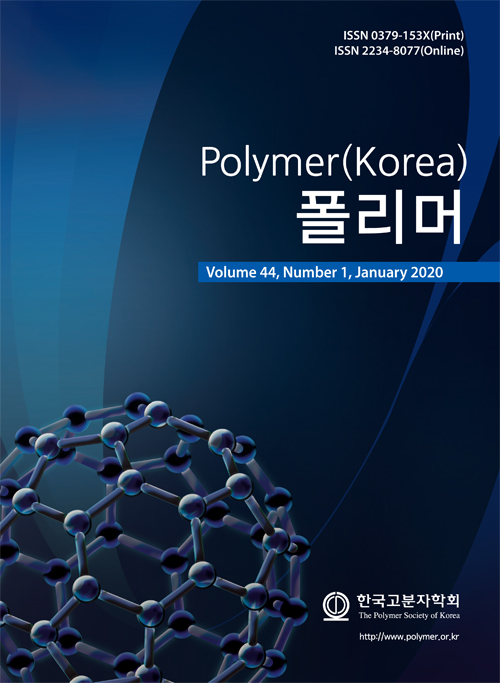- Preparation of Antioxidant Hydrogel Contact Lenses Based on Interpenetrating Hyaluronic Acid Network
Department of Chemistry, Dankook University, Chungnam 31116, Korea
*Department of Chemistry, Chosun University, Gwangju 61452, Korea- 상호침투 히알루론산 네트워크 구조를 기반으로 한 항산화 기능성 수화젤 콘택트렌즈 제조
단국대학교 화학과, *조선대학교 화학과
In this work, we prepared
antioxidant contact lenses functionalized with polyphenolic dopamine on the
lens surface. Before introducing the antioxidant dopamine, poly(2-hydroxyethyl
methacrylate) (pHEMA) lens was synthesized by copolymerizing 2-hydroxyethyl
methacrylate (HEMA) and ethylene glycol dimethacrylate (EGDMA). The pHEMA lens
surface formed an interpenetrating hyaluronic acid network structure, and the
carboxylic acid of hyaluronic acid polymer was coupled with dopamine, finally
yielding antioxidant contact lens. The prepared antioxidant lens showed a high
optical transparency, and better water content and surface hydrophilicity than
those of pHEMA lens. The antioxidant activity of the antioxidant contact lens
was about 80% higher than that of the pHEMA lens (12.6%), as characterized by
2,2-diphenyl-1-picrylhydrazyl and
2,2'-azino-bis(3-ethylbenzothiazoline-6-sulphonic acid) radical scavenging
assays. These antioxidant results are equivalent to more than 98% of the
ascorbic acid antioxidant activity.
본 연구에서는 도파민을 표면에 부착한 항산화 콘택트렌즈를
제조하였다. 2-Hydroxyethyl methacrylate(HEMA), ethylene glycol
dimethacrylate(EGDMA)를 공중합하여 기본
pHEMA 렌즈를 제조하였다. 제조된 렌즈 표면에 히알루론산 고분자를 상호침투시킨 후, 히알루론산의 카복실산 부분에 도파민으로 공유 결합시켜 항산화 콘택트렌즈를 제조하였다. 본 항산화 렌즈는 높은 광학 투명도를 보였으며, pHEMA 렌즈
대비 높은 습윤성 및 표면 친수성을 나타내었다. 라디칼 소거능 시험을 이용하여 항산화 기능성을 확인한
결과, 항산화 렌즈는 도파민을 부착하지 않은 pHEMA 렌즈에
비해 높은 소거율을 나타냈다. 본 결과는 대표적 항산화 물질인 아스코빅산의 항산화 기능대비 98% 이상에 해당하는 수치이다
Keywords: hydrogel, contact lens, antioxidant, interpenetrating polymer network, dopamine
- Polymer(Korea) 폴리머
- Frequency : Bimonthly(odd)
ISSN 0379-153X(Print)
ISSN 2234-8077(Online)
Abbr. Polym. Korea - 2023 Impact Factor : 0.4
- Indexed in SCIE
 This Article
This Article
-
2020; 44(1): 21-29
Published online Jan 25, 2020
- 10.7317/pk.2020.44.1.21
- Received on Aug 12, 2019
- Revised on Sep 30, 2019
- Accepted on Oct 12, 2019
 Correspondence to
Correspondence to
- Byoung-Ki Cho
-
Department of Chemistry, Dankook University, Chungnam 31116, Korea
- E-mail: chobk@dankook.ac.kr










 Copyright(c) The Polymer Society of Korea. All right reserved.
Copyright(c) The Polymer Society of Korea. All right reserved.